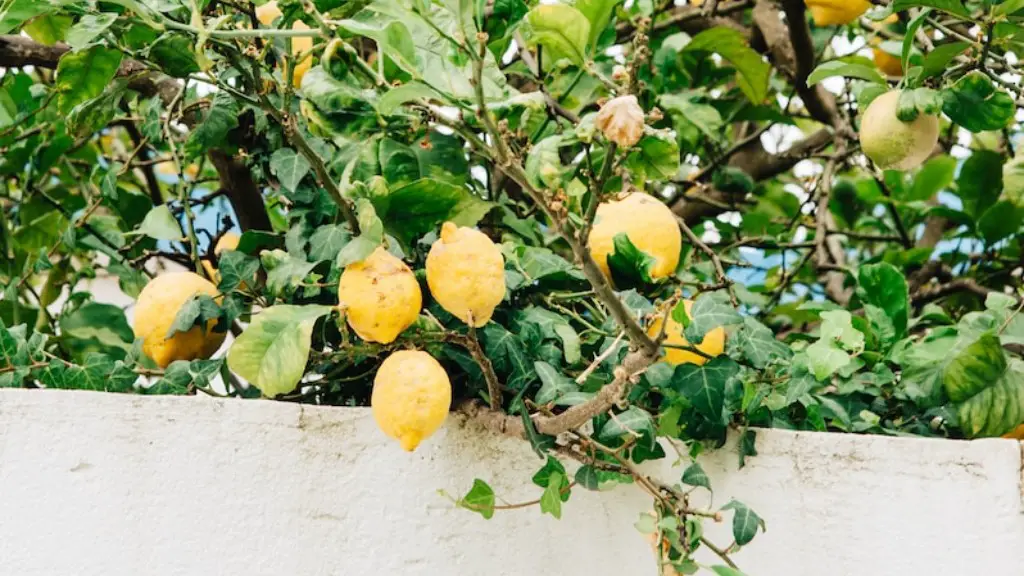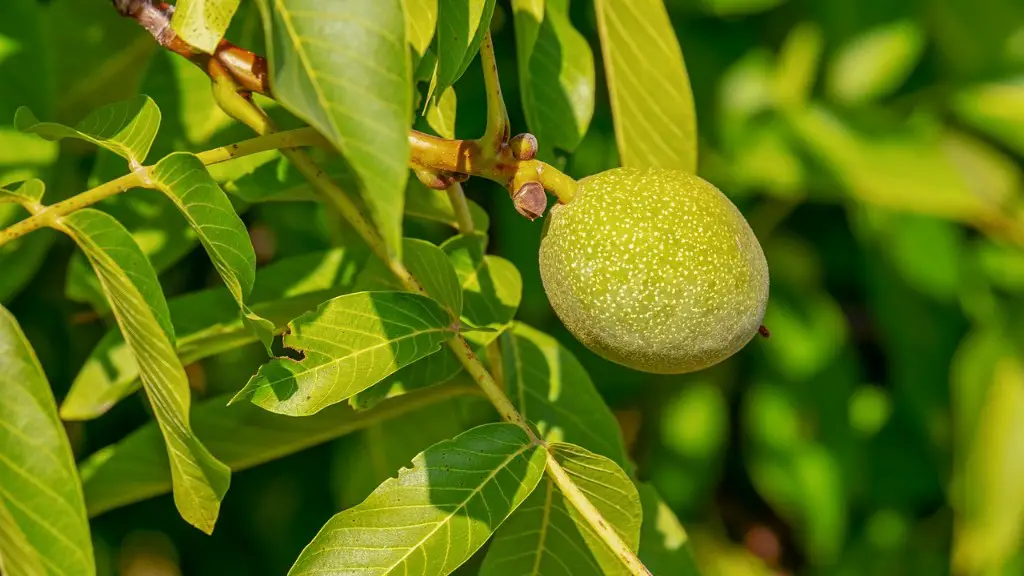Lemon tree cultivation is an exciting venture that can potentially yield a bountiful harvest. To successfully grow a lemon tree, however, it is important to understand the needs of the tree and be able to provide the necessary care and nutrition. Here is a guide on how to make a lemon tree grow fruit:
1. Plant in an appropriate location. Lemons require plenty of sunlight and warmth, so be sure to choose an area with direct and full sun exposure, ideally with temperatures between 65 and 90 degrees Fahrenheit. Keep in mind that lemon trees will often grow best when protected from cold winds, so planting near a wall or fence that can block such winds may be helpful.
2. Water regularly. Lemon trees require regular watering, as too much or too little can be detrimental to their health. Water when the soil is dry, typically about once every six days. Before watering, be sure to check the soil for moisture.
3. Prune trees. Pruning is essential for keeping lemon trees healthy and producing quality fruit. Pruning is best done in early spring, before the tree starts to actively grow. When pruning, be sure to focus on dead and damaged branches, as well as any affected foliage.
4. Use mulch. Using mulch around a lemon tree can help to keep the tree’s roots warm, protect them from changing temperatures, and retain moisture. Mulch should be applied in a four to six inch layer.
5. Fertilize tree. Fertilizing a lemon tree is an important part of ensuring healthy growth and fruit production. Be sure to use a balanced fertilizer specifically designed for citrus trees, such as one with eight ounces of nitrogen, eight ounces of phosphorous, and eleven ounces of potassium for every fifty pounds of fertilizer.
6. Watch for possible pests. It is important to be aware of possible pests, such as scale and mealybugs, which can feed on the leaves and fruit of a lemon tree. If an infestation occurs, be sure to take steps to eradicate the pests as soon as possible.
7. Thin citrus when needed. Thin citrus fruits when necessary in order to promote quality fruit production and healthy growth. Ideal thinning should leave four or five fruits per cluster. Thinning is best done during the late spring or early summer.
Preparing the Lemon Tree
Before planting a lemon tree, there are a few steps you can take to ensure successful growth. Preparing the tree’s position and soil will help provide the conditions necessary for healthy growth and fruit production. The soil should be enriched with organic matter, such as compost or manure, which will provide essential nutrients and aid in water retention. Be sure to keep the soil slightly acidic, which can be achieved by adding sulfur or sulfur-based fertilizers. It is also important to make sure that the lemon tree is adequately protected from cold winds. If necessary, you can build wind-blocking trellises to help protect the tree.
Understanding Lemon Tree Growth Stages
In order to provide adequate care for lemon trees, it is important to have an understanding of the tree’s growth stages. In the first year, the lemon tree will typically focus on growing its canopy, and in the second year the tree will begin to bloom and set fruit. This will continue for several years until the tree matures, which typically occurs around five years of age. Once a lemon tree is mature, it is important to remember that its care needs may vary depending on the season. In the wintertime, when temperatures drop and the tree goes dormant, pruning and fertilizing can be less frequent than during warmer months.
General Care Tips
In general, there are a few tips to keep in mind when caring for a lemon tree. Placing a layer of plastic tray or greenhouse ground cover under the lemon tree can help to deter weeds and retain moisture. To maximize fruit production, it is important to shield the tree from stress, such as drastic temperature changes, and keep the soil moist and well-drained. Finally, be sure to regularly check the tree for signs of pests and disease, such as yellowing leaves or spotted fruit, and treat any infestations as soon as possible.
Harvesting Lemon Fruit
Harvesting lemons from a lemon tree is a sign that all of the hard work of cultivation has paid off. Depending on the variety, the lemons can usually be harvested any time after they turn yellow and while they are still somewhat firm. To properly harvest a lemon, be sure to use pruning shears or scissors and cut the fruit at the stem. If a lemon is still green but looks ripe, it is best to leave it on the tree. Lemons that are harvested too early may not have enough time to develop the full flavor.
Potential Problems with Lemon Trees
Lemon trees do have some potential problems that can affect their growth and fruit production. Cold stress from temperatures below 25 degrees Fahrenheit can cause damage to the tree’s foliage and delay or inhibit flowering and fruiting. Disease, such as Citrus Tristeza, can also be a problem, particularly in areas with high humidity. Properly caring for a lemon tree should help to minimize the possibility of such issues. Additionally, it is important to keep an eye out for pests and treat any infestations immediately.


